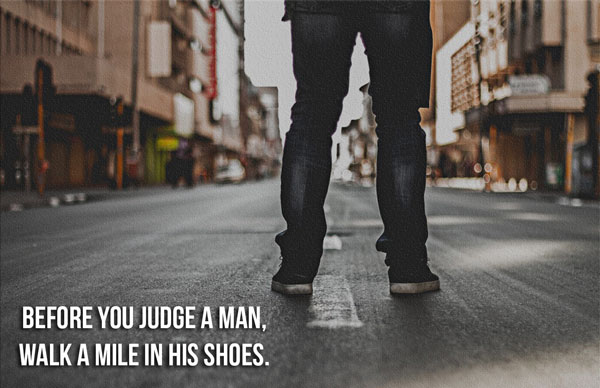Over several years of discussing November’s citizenship theme, “kindness and empathy,” with my seventh and eighth grade students, I have come to understand a thing: kids who grow up knowing, experiencing, and practicing kindness and empathy can sometimes have trouble defining just what those two concepts are. It’s just like how native English speakers use indirect objects, prepositional phrases, and participles in their daily lives but can find it difficult to point them out and define them when asked. And really, if you’re using the words to communicate clearly, if you are putting those parts of a sentence to good use, you rarely need to stop to define them. Just so with our citizenship themes: my seventh graders, and the SRS middle school in total, are kind and empathetic young adults, but they have a bit of trouble seeing the kindness and empathy all around them.
All the same, my nine advisees’ job in November was to share their understandings of kindness and empathy with the SRS community through the Heron’s View. They decided to divide and conquer (kindly). Connor, Emma, Hadley, Eve, and Anna visited classrooms and interviewed students from all grades, Anya and Evan researched news stories of kind and empathetic people, and Griffin and Ethan wrote a short-short story about kindness and empathy. (Meanwhile, I tried to be kind and empathetic as they struggled to balance this commitment with their schoolwork, extra-curricular activities, and desire to be social with their friends.) What follows is a distillation of their work and findings.
Kindness is when someone is willing to give something up to help another. Kindness normally happens when someone likes another and wants to help them, but it also happens when someone feels bad for another and wants to help them out of the goodness of their heart.
Some of the younger classes here at Shaker Road School have even made their own bulletin boards with their opinions about kindness on them. Mr. Blazon’s class, for example, has made a bulletin board containing what they call the kindness cornucopia, and Ms. Burgess’ class created the kindness turkey, where her students could place feathers with examples of kindness they experienced.
Empathy is when someone helps someone through a problem because they know what they’re going through. Empathy is also stepping into someone else’s shoes and seeing things from that person’s view. In To Kill a Mockingbird, Atticus Finch tells his daughter, Scout, “You never really understand a person…until you climb into his skin and walk around a little bit,” which is his way of explaining empathy to Scout. Really, empathy falls into a category of kindness where you help someone based on your knowledge of what they are going through.
For another way to look at empathy, imagine a kid in middle school with no friends, bullied, with people acting like he was invisible. Then one day another kid who was also bullied understood how he felt, and together they stood up to the bullies.
And now for the short-short story:
Only a few days ago, there was a house fire and a family lost everything…
“The house, everything, it’s gone!” yelled Jessica.
“Yeah, where are we going to live now?” asked Jeff.
They walked down the street to the bank to withdraw what little money that they had and continued talking about all they lost.
Two homeless men sitting on a bench overheard them as they passed. When the couple was out of hearing, one of the men spoke. “You hear that, Willie? At least they had a house with belongings in it to start with,” he said. “Us poor people don’t got nothin’ to lose with the lack of money in the economical distribution of this society.”
His friend turned toward him. “That was somethin’ very unkind of you to say, Billy. You should know better than to speak about somebody that way when they just lost everything that they owned in a fire. Be more empathetic and kind to them. See this disaster from their point and try to help that poor family,” said the friend. “How would you feel if you had to watch everything you owned go up in flames?”
“Well, when you put it that way, I sound like a jerk,” replied Billy. “Sorry about that. I know what it is like have nothing.”
Kindness and empathy are simple concepts, as the advisory expressed: kindness is wanting to help, to do some good, and empathy is being able to walk around in another person’s shoes. Our students here at SRS are kind and empathetic on a daily basis. They are good at finding examples of such in the wider world, but somehow my advisees missed noticing the examples all around them. I’m not surprised. When we are surrounded by kindness, it becomes harder for the evidence to stand out. Just the opposite, actually—unkind acts and behaviors tend to stand out starkly for their rarity. Clearly, we need to work hard to ensure that our children can recognize kindness and empathy as the norm and celebrate the deeds that come from those powerful words.



